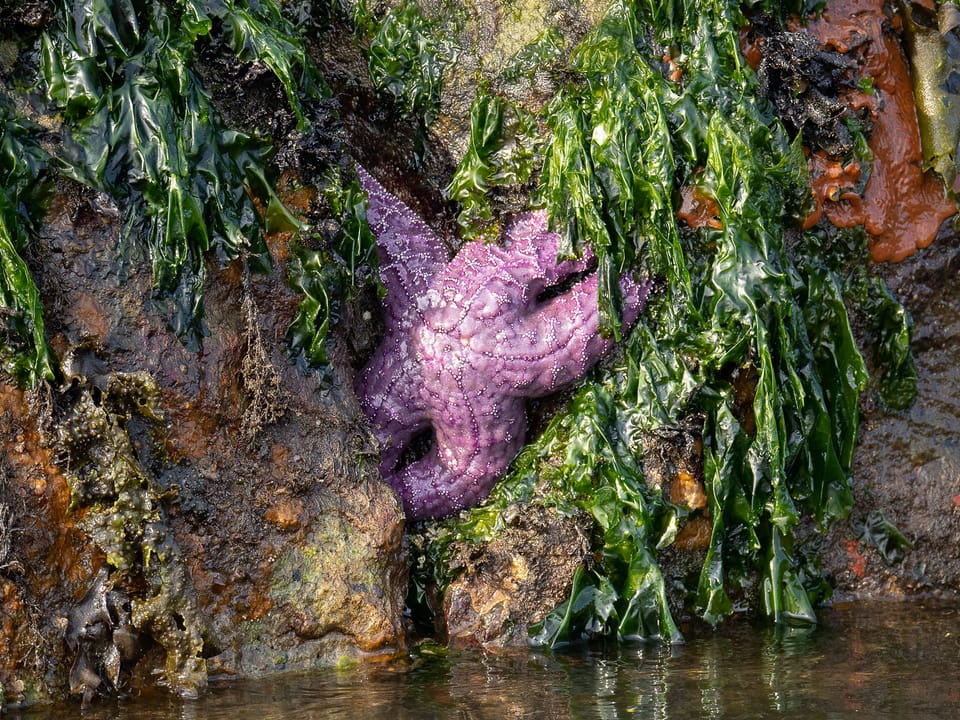EcoWest News, October 17, 2023

Welcome to EcoWest News, a weekly round-up of news and resources that you can put to use in addressing environmental issues and protecting the wild in your community.
Across the West
Groups participating in Nature Manitoba’s fall hawk watch spotted up to 100 species of birds in some locations. “Raptor totals far exceeded those of the past few years, which was encouraging, with an uptick in Turkey Vultures, Northern Harriers, Broad-winged Hawks and Red-tailed Hawks.” [Nature Manitoba]
McClelland Lake in northern Alberta is one of the last remaining freshwater landing places and refuges for birds travelling to and from the Peace Athabasca Delta. Suncor’s Fort Hills oil sands mine expansion will add 60 square kilometers of new tailings ponds and destroy half the wetland complex. [CPAWS Northern Alberta]
Solar energy is not a threat to Alberta farmland. The vast majority of solar projects approved between 2019 and 2023 sit on farmland rated as severe or worse for crop production. A far greater threat is urban expansion and rural residential areas, and oil and gas have spread their operations across the province. [The Tyee]
There are only 3 northern spotted owls left in the wild. The species’ future is threatened by the BC government continuing to support old-growth logging and the federal government’s refusal to intervene. [The Narwhal]
BC’s Interior Health region is the first to adopt a Climate Change and Sustainability Roadmap that provides long-term, strategic direction for preparing for and mitigating the health impacts of climate change. [The Nelson Daily]
Tips from a vineyard owner on how to protect nesting and feeding sites of beneficial insects when pruning. [BC Native Bees]
Agricultural Greenhouse Gas Emissions in Saskatchewan: A Comprehensive Assessment, published by the National Farmers Union, shows that GHG emissions have doubled in the past 30 years. The tonnage of nitrogen fertilizer applied annually in Saskatchewan has quadrupled since 1990. [National Farmers Union]
Around the World
It takes a great deal of energy to turn sand into glass and to produce flat, uniform sheets. But zero-carbon glass is possible by changing the heat source and recycling glass. Demonstration projects are underway in various European cities. [Earthbound Report]
Small electronics (disposable vapes, electric toothbrushes, toys, cables) are everywhere, and they’re not getting recycled. That’s a waste of valuable minerals and a source of contamination in landfills. [The Verge]
A circular economy will rely on urban mining to reuse building materials in future construction projects. Materials passports identifying the components in a structure make it “vastly easier to recover everything of value.” [Metabolic]
DIY
The state of California has passed a right-to-repair law guaranteeing consumers access to parts, software, and manuals. “This is a common sense bill that will help small repair shops, give choice to consumers, and protect the environment.” [The Verge]
The climate impact of cotton depends on where and how it was grown, how often you wash it, and how long you wear it. [Anthropocene]
What a heat-proof city could look like: heat solutions and adaptations that will help cities prepare for one of climate change’s deadliest impacts. [Grist]
Hybridization
There are multiple factors that should prevent bog orchids from hybridizing, and yet it’s happening. Jasmine Janes’ research on Vancouver Island will help scientists better understand how new species evolve and how they affect the ecosystem. [Vancouver Island University]
Three genetically distinct groups of Canada Jays occupy different climate niches. Hybrids were most common in intermediate climate zones and habitats. [Nature]
Nature’s Wonders
Striped Sea Stars are gobsmackingly beautiful – who says there’s no colour in the cold Pacific Ocean! [The Marine Detective]
The beauty of the natural world is all around us: Wildlife Photographer of the Year 2023 winners. [EuroNews Green]
Photo credit: https://www.flickr.com/photos/apmckinlay/52283884444/
EcoFriendly West informs and encourages initiatives that support Western Canada’s natural environment through its online publication and the Nature Companion website/app. Like us on Facebook, follow us on Twitter or Mastodon, or subscribe by email.

Member discussion